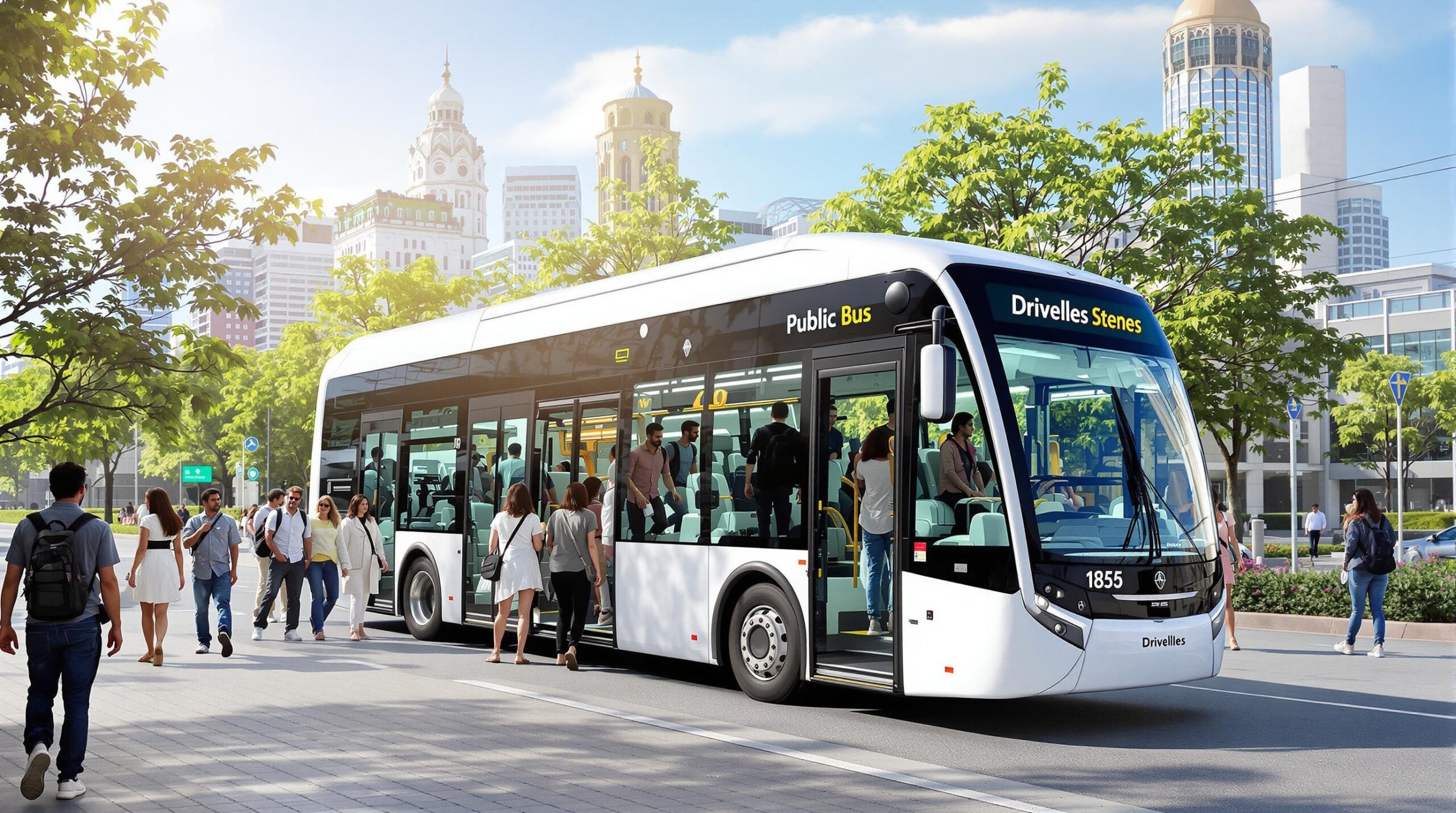Driverless public buses are transforming the urban transportation landscape. By integrating advanced technologies, these autonomous vehicles promise safer, more efficient, and eco-friendly journeys. Understanding the secret technology behind these revolutionary buses can help shed light on their potential impact.
Understanding Autonomous Vehicle Fundamentals
At the core, driverless public buses rely on sophisticated computer systems to interpret and navigate complex urban environments. These systems must recognize obstacles, traffic signals, and other vehicles without direct human input. The foundation of this ability lies in a set of sensors, control algorithms, and data-processing units.
By mimicking and often exceeding human perception, these buses deliver consistent performance regardless of weather or visibility conditions. Innovative hardware and software work in unison to provide reliable transportation services, even on routes with high levels of congestion.
Transitioning from old-fashioned buses to driverless counterparts involves integrating many new technologies, each contributing to the complete system’s success. This blend creates reliable and more innovative public transportation solutions with every passing day.
Sensor Suites: The Eyes and Ears of Driverless Buses
Modern autonomous buses utilize an extensive suite of sensors to “see” and “hear” their surroundings in real-time. LIDAR (Light Detection and Ranging) sensors emit laser pulses to map the environment with pinpoint accuracy. These sensors detect objects, measure their distance, and create a 3D replica of the bus’s environment.
High-resolution cameras capture visual data, allowing them to interpret road signs, markings, and traffic lights. Alongside cameras, ultrasonic sensors detect close-range obstacles such as curbs or even pedestrians stepping onto the street. Radar sensors analyze the speed and movement of cars, trucks, and other moving objects around the bus, even in adverse weather conditions.
This combination of LIDAR, radar, cameras, and ultrasonic devices forms a redundant, fail-safe network. By using multiple types of sensors, the system can validate information and ensure accuracy, reducing the risk of error. Such robust sensing technology is crucial for the safe deployment of driverless buses on crowded city streets.
The Role of Artificial Intelligence and Machine Learning
The raw sensor data must be interpreted and acted upon immediately. Advanced artificial intelligence (AI) and machine learning algorithms process this information with remarkable speed. These systems use deep neural networks, modeled after the human brain, to identify objects, predict movements, and make driving decisions.
AI can recognize everything from streetlights to jaywalking pedestrians and adapt the bus’s actions accordingly. With machine learning, autonomous buses improve over time. They adjust to new traffic patterns, recognize unusual objects, and refine their responses based on the data they have accumulated. Continuous learning ensures that the system becomes safer and more efficient with every journey.
Transitioning from conventional programming to deep learning allows these buses to face unpredictable situations. For instance, AI helps a bus avoid a cyclist swerving into its path or respond to road construction with appropriate caution.
Software Integration and Real-Time Processing
A seamless operating system coordinates all onboard components in real time. This software integrates sensor data, localizes the bus on a high-definition digital map, and updates the planned route every second. Parallel computing processes millions of calculations every moment, ensuring the bus responds instantly to dynamic situations.
Redundancy is built into both the hardware and software systems. If one component fails, others seamlessly take over. This multiplies reliability and addresses safety concerns. A supervisory control system monitors the status of every subsystem, instantly triggering alarms or engaging backup protocols at the slightest sign of trouble.
Connectivity and V2X Communication
Driverless buses do not operate in isolation. Vehicle-to-Everything (V2X) communication links buses with traffic lights, infrastructure, and even other vehicles. With V2X, the bus can anticipate red lights, avoid congestion, and optimize route selection for timely arrivals.
GPS and 5G networks ensure that buses remain connected to central control centers. This connectivity allows for remote diagnostics, software updates, and real-time route adjustments. Fleet operators can monitor many buses simultaneously, dispatching aid instantly if an unexpected issue arises.
Efficient communication networks also enhance cybersecurity, a crucial factor when it comes to autonomous public transport. Encrypted, secure channels help protect critical systems against unauthorized access or cyberattacks, ensuring passenger safety.
Mapping and Localization Techniques
Precise mapping is crucial for autonomous vehicles. Driverless buses rely on high-definition (HD) maps that feature lane boundaries, curbs, and traffic regulations. These maps are far more detailed than standard GPS navigation, with accuracy down to a few centimeters.
Localization algorithms match real-time sensor data to these HD maps. This ensures that the bus always knows its exact position. Correction protocols, such as Differential GPS, further enhance accuracy, reducing deviation even in urban canyons filled with tall buildings.
As infrastructure evolves, cloud-based updates refresh the bus’s mapping files, keeping everything up to date with the most current information. This dynamic approach maintains accuracy and navigational safety.
Safety Protocols and Human Oversight
Safety is the top priority for driverless buses. Multiple emergency protocols allow the vehicle to halt safely in case of unexpected issues. Human supervisors, either onboard or monitoring remotely, retain the ability to intervene at any time.
Independent safety consultants test and validate each new algorithm or system before it is fully deployed. Regulatory agencies also set strict guidelines that autonomous buses must follow. This multi-layered approach helps build trust with the public and ensures that driverless buses set a new standard for urban safety.
Real-World Deployment and Future Prospects
Driverless public buses are no longer science fiction. Today, pilot projects operate in cities worldwide. These deployments focus on fixed routes, low-speed corridors, or industrial campuses, gradually expanding scope as technology matures. Passenger feedback provides valuable insights that shape further development.
As sensors become cheaper and AI more powerful, the scalability of driverless bus technology will soon extend to regular city routes. The transportation industry anticipates dramatic reductions in operational costs, emissions, and traffic fatalities as adoption increases. Urban life stands on the brink of a transformative revolution in mobility.
Witnessing these advances, cities are planning new infrastructure to better accommodate autonomous buses. Strategies include dedicated bus lanes, improved connectivity, and enhanced vehicle-to-vehicle (V2V) and vehicle-to-everything (V2X) networks. Future collaborations between technology providers, transit authorities, and communities promise to accelerate global integration.
Conclusion: A New Era for Public Transit
The secret technology powering driverless public buses blends advanced sensors, artificial intelligence, real-time connectivity, and rigorous safety measures. Together, these innovations promise safer, cleaner, and more efficient transportation for everyone. Experiencing this technology first-hand signals the dawn of a new era in urban mobility, paving the way for smarter, sustainable cities worldwide.


